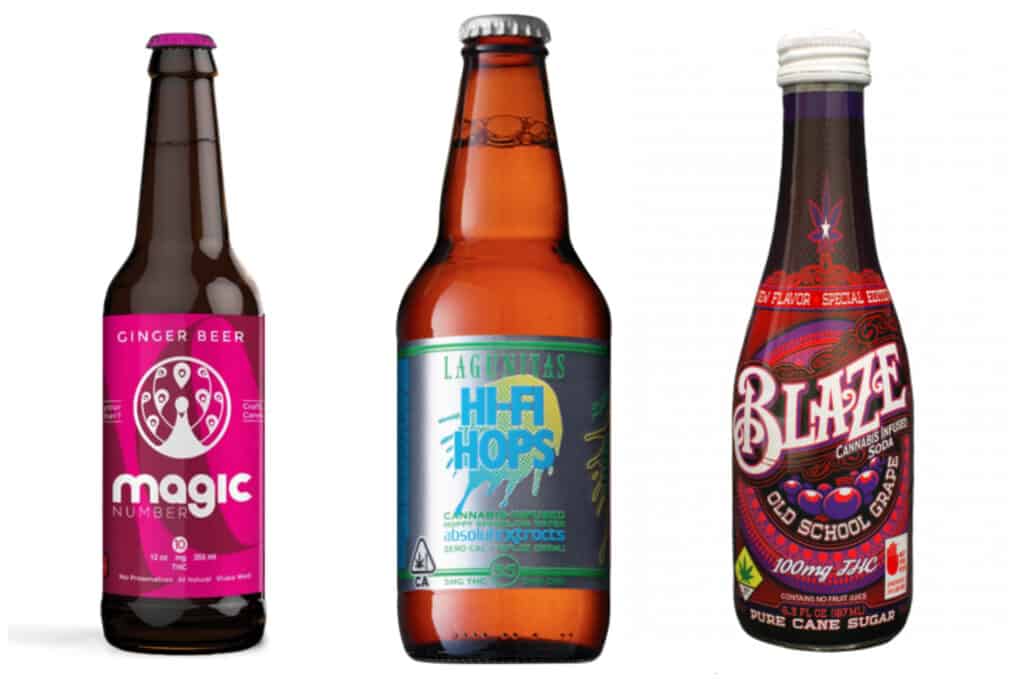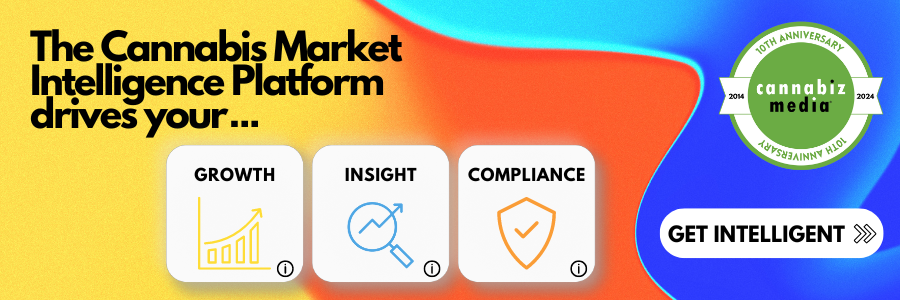Several alcoholic beverage companies have recently trumpeted the arrival of their cannabis beverage brands. This has industry insiders wondering if beer giants like PBR and Coors may be in for a letdown. US cannabis beverage sales comprise a small percentage of the ingestible cannabis market (6% of 2019 sales), and a tinier share of the overall market. However, that could be changing. Cannabis market research firm BDSA forecasts that sales of beverages containing THC or CBD will top $1 billion by 2022. But several market conditions stand in the way of exponential growth.
Why aren’t cannabis beverages more popular?
The first problem was a lack of variety in flavors and dosages. When regulated recreational cannabis sales started in 2014, most of the beverages on the market were soda and fruit-flavored punch products with a high THC dosage and high sugar content to mask bitter flavors. Denise De Nardi, Vice President of Sales for Native Roots, told me these products failed to offer desirable flavors and were “not super exciting.”
As the cannabis market matures, we’re seeing the entrance of new products and flavors: powders, seltzer waters, juices, non-alcoholic beers, wines, mocktails, shots, coffees, teas and energy drinks. Many brands now offer low dosage and low sugar options.
Austin Stevenson serves as a board member of the Cannabis Beverage Association and chief innovation officer for Vertosa, an Oakland-based company that recently partnered with Pabst Blue Ribbon to create a non-alcoholic seltzer water brand in the California market. Stevenson says the innovation in cannabis beverage products and flavors has been mostly driven by improvements in emulsification that Vertosa helped develop. This new technology promotes a stable and consistent diffusion of cannabis oil and added flavors throughout a beverage.
The problem with presentation
Despite these innovations, retailers are discovering that merchandising cannabis beverages can still be a challenge. Currently, beverage sales are predominantly add-on purchases and thus prominent display is essential to driving sales. But most dispensary beverage displays aren’t front and center, and many dispensaries have insufficient shelf infrastructure to suitably merchandise beverages.
Stevenson from Vertosa thinks merchandising opportunities for cannabis beverages will improve as retail facility design evolves. He believes that in the newly regulated Northeast and Midwest markets we’ll begin to see stores that are “accessible and friendly to all” and allow for “a consumer experience that looks like a 7-11.”
The problem with packaging
Cannabis beverages lose THC potency quicker than leading edible products that don’t require as much shelf space. Over several months, THC potency is degraded by plastic bottles and cans, which can lead to an inconsistent dosage and a negative experience with a brand.
Vertosa is collaborating with their partners to develop packaging that doesn’t diminish THC potency or take up excess shelf space. Stevenson says as the company refines their emulsification methods, it will enable more product types and cost-effective packaging to be developed.
The problem with dosage
It’s easier for people to learn how to responsibly consume edible products like candies and baked goods that are manufactured in consistently portioned dosages, which prevent customers from over-consuming. Consumers of cannabis beverages must use a measuring device to portion out their optimal THC dose, and measurement tools vary depending on a brand’s packaging.
Rebecca Gonzalez, a general manager of Mission Dispensaries in Chicago, says beverage customers will often tell her, “I don’t know how much to take,” and consequently, “there’s been a lot of education needed specifically on dosing.” If consumers don’t receive proper education about responsible beverage consumption, they run the risk of over-indulging and brands could lose a customer as a result of a negative experience with their product.
Richard Pipp, head of sales at Cannapunch, says beverage packaging can be confusing to consumers, and there’s absolutely a need for more education. To address this need, Pipp says, “We go into stores and do events with our customers to educate them on the dosing process and how to consume the product responsibly.” If we’re going to see broader acceptance, retailers and brands will need to follow this example and effectively educate consumers about how to responsibly drink beverages.
The advantage of THC beverages
Even though the majority of consumers currently prefer candies and baked goods, beverages have some clear advantages. Most of the THC in candies and baked goods is metabolized by the liver and converted into 11-Hydroxy-THC. The THC in cannabis beverages is mostly metabolized by the small intestine, which prevents the liver from receiving a significant amount of THC for conversion into 11-Hydroxy-THC.
The presence of 11-Hydroxy-THC in the bloodstream promotes a high that Gonzalez from Mission Dispensaries describes as “too sedating” and leaves you with a lack of energy and focus as a result. Since beverages don’t promote the production of 11-Hydroxy-THC, the effects of the high won’t make you feel as spacey and lethargic. This could be an attractive quality for newer consumers seeking a milder high than they’d get from candies and baked goods.
The difference in the way THC in beverages is metabolized gives consumers an added benefit . As Gonzalez puts it, you’ll feel the effects of cannabis beverages faster than you would feel with most candies or baked goods. As a result, she’s seen a significant number of customers transition from traditional candies to beverages. In fact, Gonzalez has personally made this transition.
THC on tap?
In the US, a consumer can’t currently walk into a cafe to relax over a THC-infused beverage. Pipp from Cannapunch says public consumption regulations are “the thing that the industry has been lacking most.” Sales potential will be limited until we see regulated public spaces to purchase and consume THC-infused soda, juice, energy drinks, and mocktails. Pipp thinks there are “endless possibilities” for the future of consumption lounges. “In two years, we may see Cannapunch on tap at a consumption facility!”
Sales potential will be limited until we see regulated public spaces to purchase and consume THC-infused soda, juice, energy drinks, and mocktails.
Stevenson from Vertosa envisions spaces, like bars and tasting rooms, specifically dedicated to cannabis beverage consumption. “If there’s a bar on every corner, there could be a consumption lounge on every corner,” he says. He’s optimistic about the future of cannabis consumption lounges but says the Covid-19 pandemic has delayed their development.
So how far away are we from seeing cannabis beverages dominate the market? Sales will flourish when retailers overcome merchandising challenges and brands create ideal products and promote consumer awareness. But sales won’t reach their full potential until public consumption regulations are improved, state by state. These aren’t impossible hurdles. In a few years, THC on tap may be the new normal.





